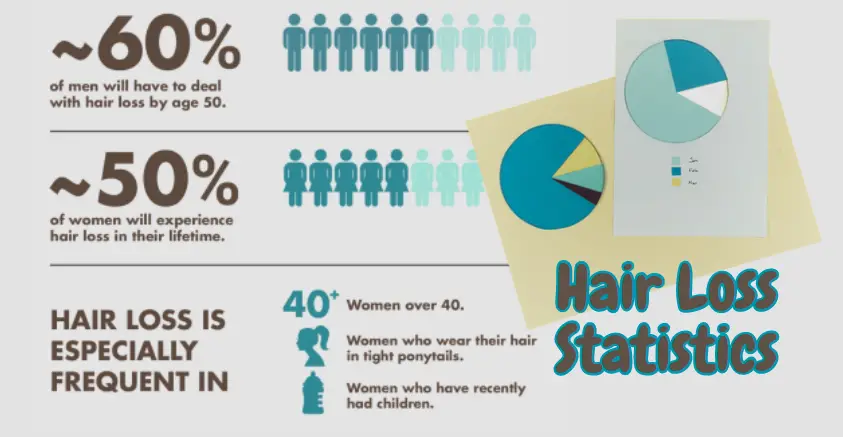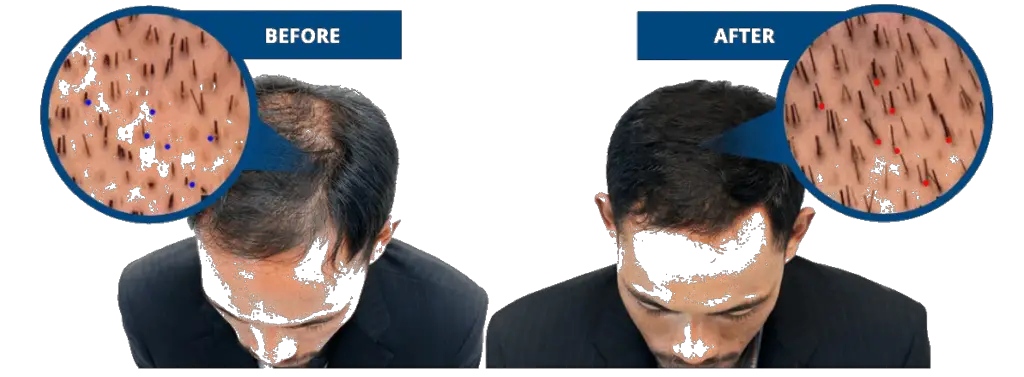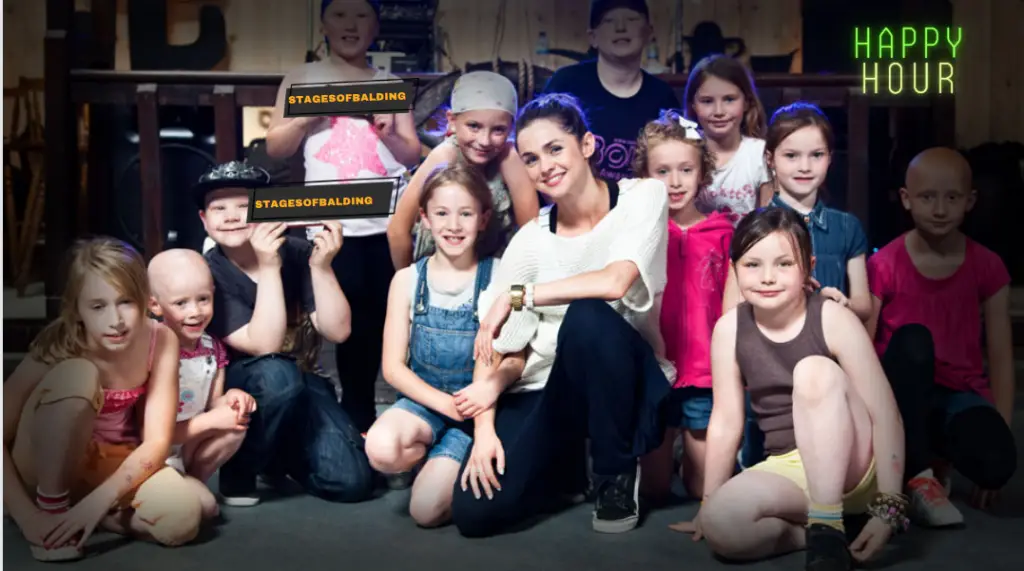Dive into the most comprehensive guide on hair loss statistics for 2023. Discover surprising facts, trends, and solutions that you never knew existed.
Understanding the intricacies of hair loss statistics is not just a matter of curiosity; it’s a necessity for anyone grappling with hair loss or those in the healthcare and beauty industries. The statistics provide a quantitative insight into a problem that affects millions globally, offering a clearer picture of its prevalence, causes, and potential solutions.
The data can be both enlightening and alarming. For instance, did you know that 25% of men start balding before they turn 21? Or that women with high-stress levels are 11 times more likely to experience hair loss? These numbers are not just digits; they represent real people dealing with real issues.
If you’re new to the topic of hair loss, you might want to start with the basics. Understanding the Basics of Hair Loss is a comprehensive guide that delves into the root causes, types, and treatments available for hair loss. It’s a must-read for anyone looking to arm themselves with knowledge in the battle against balding.
So, why should you care about these statistics? Because they can guide you in making informed decisions, whether you’re choosing a treatment plan, a hair care product, or even considering lifestyle changes. Knowledge is power, and in this case, it could be the power to keep your hair.
Ready to dive deeper? Don’t just skim the surface; explore the comprehensive statistics and trends that could redefine your understanding of hair loss. Let’s jump right in!
Key Takeaways
The world of hair loss statistics is filled with numbers that can both astonish and enlighten you. While the data is extensive, there are a few statistics that stand out for their shock value and utility.
For instance, a staggering 29% of women experiencing hair loss also show symptoms of depression. The mental toll of hair loss is often underestimated, but this statistic brings the issue to the forefront. Another eye-opening fact is that women with high-stress levels are 11 times more likely to experience hair loss. Additionally, 58% of children suffering from alopecia meet the criteria for anxiety disorders, highlighting that hair loss is not just an adult concern but affects the younger generation as well.
If these statistics have piqued your interest, you might want to explore Hair Loss Treatments That Actually Work for actionable solutions to these pressing issues. This guide offers a holistic approach to tackling hair loss, from medication to lifestyle changes.
Ready to Take Action? Don’t let these statistics be just numbers; let them be the catalyst for change. Whether you’re dealing with hair loss personally or know someone who is, these key takeaways offer a starting point for effective intervention and treatment.
Men’s Hair Loss Statistics
Understanding the prevalence and causes of hair loss in men is crucial for both prevention and treatment. The statistics paint a vivid picture of how widespread this issue is among the male population.
- 95% of hair loss in men is caused by androgenetic alopecia. This form of hair loss is primarily genetic and is the most common cause.
- 25% of men start balding before the age of 21. Early onset can be particularly distressing and may require immediate intervention.
- 66% of men will experience some form of hair loss by the age of 35. This statistic underscores the pervasiveness of the issue.
- 85% of men will have significantly thinner hair by the age of 50. Thinning hair is often a precursor to more severe forms of hair loss.
- 70% of men will experience hair loss by the age of 80. This indicates that hair loss is not just a middle-aged concern but continues into later life.
Prevalence and Causes
Studies show that by the age of 50, approximately 85% of men experience some form of hair thinning or loss. The primary cause is often attributed to a combination of genetics and the male hormone dihydrotestosterone (DHT).
- Genetic Factors: A significant percentage of men inherit genes that make them more susceptible to hair loss.
- Hormonal Changes: Elevated levels of DHT can shrink hair follicles, leading to thinning and eventual loss.
- Lifestyle Factors: Stress, poor diet, and lack of exercise can also contribute to hair loss.
For those who find these statistics alarming, it’s essential to delve deeper into the root causes of male hair loss. Our comprehensive guide on Why Men Lose Hair offers insights into the genetic, hormonal, and lifestyle factors that contribute to this condition.
Ready to Take Control? If you’re among the millions of men affected by hair loss, don’t despair. Knowledge is power, and understanding these statistics is the first step towards effective treatment. Explore our range of hair loss solutions to find a treatment that works for you.
Women’s Hair Loss Statistics
The topic of hair loss in women is often overshadowed by its prevalence in men, yet the statistics reveal that it’s a significant concern for the female population as well. Understanding both the prevalence and psychological impact is crucial for addressing this often-stigmatized issue.
- 50% of women experience hair loss in their lifetime. This is a staggering number that highlights the need for more awareness and solutions tailored for women.
- 2-3% of women are affected by Female Pattern Hair Loss (FPHL) by the age of 30. This early onset can be particularly distressing and may require immediate intervention.
- 10% of women are affected by FPHL by the age of 50, and this number jumps to 30% by the age of 70. These statistics indicate that the issue persists and even intensifies as women age.
- 29% of women with hair loss reported symptoms of depression. The psychological impact of hair loss in women is significant and often leads to emotional distress.
- Women with high-stress levels are 11 times more likely to experience hair loss. Stress management may be a key factor in preventing or mitigating hair loss in women.
For those who find these statistics concerning, it’s crucial to understand the underlying causes and psychological effects of hair loss in women. Our in-depth guide on Hair Loss in Women: Causes and Solutions provides valuable insights into this complex issue.
Ready to Take Action? If you’re among the millions of women grappling with hair loss, there’s hope. Understanding these statistics is the first step toward effective treatment. Explore our range of hair loss solutions specifically designed for women and take control of your hair health today.
Global Hair Loss Statistics
Understanding the prevalence of hair loss on a global scale is crucial for both individuals and healthcare providers. It’s not just a cosmetic issue; it’s a matter of public health and well-being. Various factors contribute to the incidence of hair loss, including genetics, lifestyle, and even ethnicity.
By Country and Ethnicity
- United States: Nearly 56 million people suffer from some form of hair loss.
- China: A staggering 250 million individuals are affected.
- India: Over 63 million people are grappling with hair loss issues.
- United Kingdom: 8 million women and 6.5 million men are affected.
- South Korea: Approximately 71.8 million people are experiencing hair loss.
For a deeper dive into the causes and solutions for hair loss, check out our article on Men Hair Loss and Hair Loss in Women: Causes and Solutions.
Table: Comparison of Hair Loss Statistics by Country
| Country | Number of Cases (in millions) |
|---|---|
| United States | 56 |
| China | 250 |
| India | 63.2 |
| UK Women | 8 |
| UK Men | 6.5 |
| South Korea | 71.8 |
If you’re concerned about hair loss, you’re not alone. Millions of people worldwide are in the same boat. Don’t let the numbers scare you; let them motivate you to take action. Explore our range of hair loss solutions and take the first step towards reclaiming your confidence today.
Note: The statistics mentioned are based on various studies and surveys. For more detailed statistics, you can visit Dr. Farole’s article which provides an in-depth look into the prevalence and treatments for hair loss.
Industry Insights
The hair loss industry is a burgeoning market, with a plethora of products and treatments available for those grappling with this common issue. From over-the-counter solutions to prescription medications, the choices are vast, making it crucial to understand the market size and leading products in this sector.
Top 5 Hair Loss Prevention Products
- Minoxidil: Dominates the market with a 35% share. Known for its effectiveness in stimulating hair growth.
- Finasteride: Holds a 28% market share. Primarily used for male pattern baldness.
- LLLT Devices: These Low-Level Laser Therapy devices have a 20% market share and are gaining popularity for their non-invasive approach.
- Natural Oils: With a 10% market share, oils like castor and coconut oil are favoured for their organic properties.
- DHT Blockers: These products inhibit Dihydrotestosterone, a hormone linked to hair loss, and hold a 7% market share.
For a deeper dive into the effectiveness of these products, check out our comprehensive guide on hair loss treatments.
Struggling with hair loss? Don’t settle for less effective solutions. Explore our in-depth reviews of top-rated hair loss products to find the best fit for you.
By understanding the industry insights, consumers can make informed decisions about which products to invest in for their specific hair loss needs.
Health Correlations
Understanding the link between hair loss and other health conditions is crucial for both prevention and treatment. While hair loss is often considered a cosmetic issue, it can also be a symptom of underlying health problems.
- Thyroid Disorders: Affecting 20% of individuals experiencing hair loss, thyroid imbalances can significantly impact hair growth.
- PCOS (Polycystic Ovary Syndrome): Accounting for 15%, this hormonal disorder can lead to thinning hair in women.
- Alopecia Areata: This autoimmune disorder is responsible for 25% of hair loss cases.
- Iron Deficiency: Affecting 30% of individuals, low iron levels can lead to hair loss.
- Stress and Anxiety: Making up the remaining 10%, stress-induced hair loss is a growing concern.
For a deeper understanding of how these conditions can affect your hair and overall health, check out our comprehensive guide on Hair Loss and Your Health.
Are you experiencing hair loss and concerned about your health? Don’t ignore the signs. Explore our solutions for tackling both hair loss and its underlying health conditions. Discover More.
By understanding these health correlations, one can take a more holistic approach to treating hair loss, thereby improving both scalp and overall health.
Children and Hair Loss
When it comes to hair loss, the focus often shifts to adults, overlooking the significant impact it can have on children. The prevalence of hair loss in children is not as rare as one might think. In fact, hair loss accounts for approximately 3% of pediatric office visits. This statistic alone underscores the gravity of the issue among the younger population.
The psychological effects are even more concerning. A staggering 58% of children suffering from alopecia meet the criteria for anxiety disorders. This highlights the urgent need for comprehensive solutions that address both the physical and emotional aspects of hair loss in children.
For a deeper understanding of the health implications, consider reading Hair Loss and Your Health.
Key Points:
- 3% of pediatric office visits are related to children’s hair fall.
- 58% of children with alopecia meet the criteria for anxiety disorders.
If your child is experiencing hair loss, it’s crucial to consult a healthcare professional for a proper diagnosis and treatment plan. Don’t let the issue escalate to a point where it affects their mental well-being. Explore our range of solutions tailored for children’s hair loss today!
Note: The statistics mentioned are based on specific studies and may vary.
FAQs
The topic of hair loss statistics often raises numerous questions, especially given the wide range of factors that contribute to hair loss across different age groups, genders, and ethnicities. This section aims to address some of the most common questions that readers have about hair loss statistics.
What is the most common age for hair loss to begin?
The most common age for hair loss to begin is around 30 to 40 years for men and slightly later for women. However, it can start as early as the late teens for some individuals.
How prevalent is hair loss in women compared to men?
While men are more commonly affected, approximately 40% of women experience some form of hair loss by the age of 40.
Are certain ethnicities more prone to hair loss?
Yes, hair loss prevalence can vary by ethnicity. For example, Caucasian men are more likely to experience male pattern baldness than Asian men.
What are the psychological impacts of hair loss?
Hair loss can lead to a range of psychological issues, including anxiety and depression. As mentioned earlier, 58% of children with alopecia meet the criteria for anxiety disorders.
Key Points:
- Most common age for hair loss: 30-40 years for men, later for women.
- Prevalence in women: 40% by the age of 40.
- Ethnic variations: Caucasian men are more affected than Asian men.
- Psychological impacts: Can lead to anxiety and depression.
Note: The statistics and answers provided are based on various studies and may differ depending on individual circumstances.
Conclusion
In the realm of hair loss, understanding the statistics is crucial for anyone looking to navigate this complex issue effectively. From the prevalence rates in men and women to the psychological impacts and market trends, the data provides invaluable insights. It’s not just about numbers; it’s about real people facing real challenges, often with significant emotional tolls.
As we’ve explored, hair loss is a pervasive issue that affects millions worldwide, irrespective of age, gender, or ethnicity. The statistics serve as a wake-up call, emphasizing the need for proactive measures and informed choices.
If you’re grappling with hair loss, you’re not alone. The first step in addressing the issue is gaining a comprehensive understanding of it.
References
For those who wish to delve deeper into the statistics and studies cited in this article, the following references offer a wealth of information:
- American Hair Loss Association – Men’s Hair Loss
- Reader’s Digest – Bald Men and Testosterone
- The Hair Society – Hair Loss Statistics
- Sheffield Teaching Hospitals – Hair Loss PDF
- NAHRS – Female Pattern Hair Loss
- PubMed – Hair Loss Study
- Medical News Today – Hair Loss
- PubMed – Hair Loss Research
- American Hair Loss Association – Children’s Hair Loss
- BioNumbers – Hair Loss Data
- United Care Clinic – Hair Loss Statistics
- Cleveland Clinic – Hair Loss in Women
- Medical News Today – Hair Loss Causes
- Bosley – Average Age for Hair Loss
- Karger – Hair Loss Study
- Harvard Health – Hair Loss A to Z
- NY Times – Traction Alopecia
- Statistic Brain – Hair Loss Statistics
- Global Times – Hair Loss in China
- PubMed – Psychological Effects of Hair Loss
- NHS – Hair Loss
- CEMC – Men’s Health and Hair Loss
- PubMed – Anxiety Disorders and Alopecia
- LWW Journals – Female Pattern Hair Loss
- Push Doctor – Hair Loss Treatment
- Bookimed – Hair Transplant
- Business Insider – Hair Transplant Study
- Wiley Online Library – Hair Loss Research
- PubMed – Hair Loss and Ethnicity
- PubMed – Hair Loss and Age
- PubMed – Hair Loss and Genetics
- Statista – Hair Loss in South Korea
- Statista – Global Human Hair Exporters
- Statista – Hair Loss Treatments in South Korea
- Statista – Women’s Hair Wishes
- Statista – Attitudes Towards Female Hair Loss
- Statista – Hair Regrowth Products Usage
- Statista – Hair Transplant Costs
- Statista – Hair Transplant Costs by Country
For more in-depth information, feel free to explore these resources. Knowledge is power, especially when it comes to tackling hair loss.
- AI Powered Bald Filter Online 2024: See Yourself with No Hair! - January 19, 2024
- Harklinikken Bad Reviews 2024: Analyzing Negative Feedbacks - January 18, 2024
- How to Get the Alex Eubank Hair | Step-By-Step Tutorial 2024 - January 18, 2024







